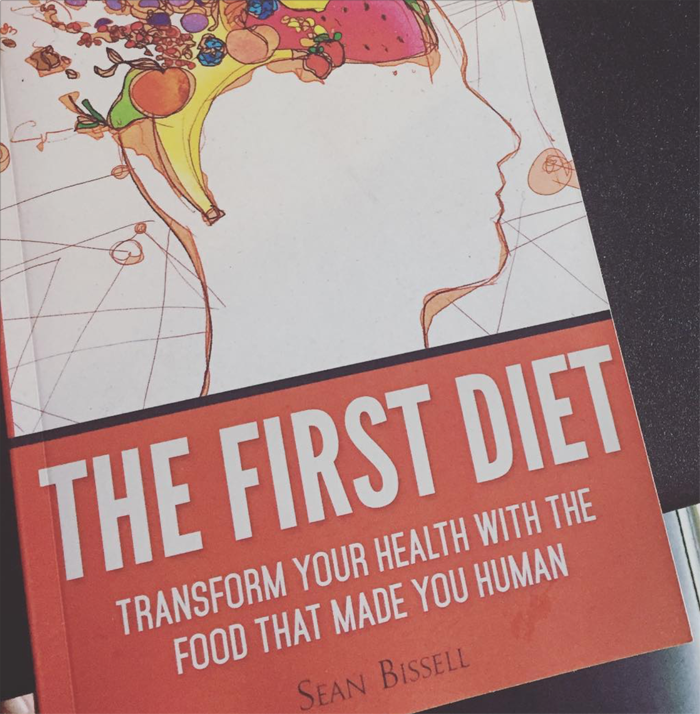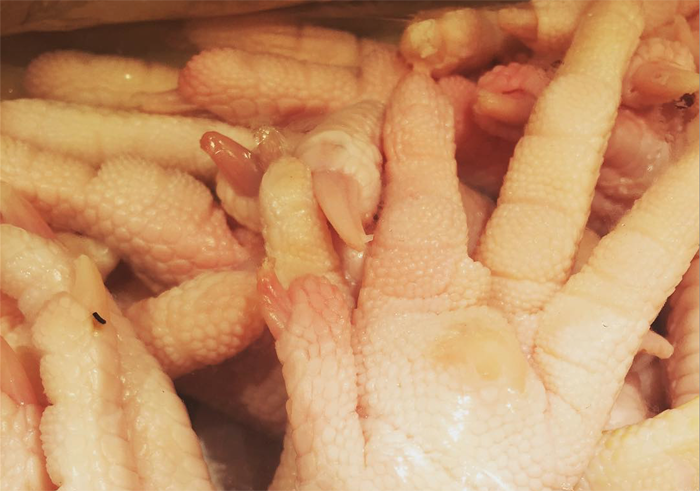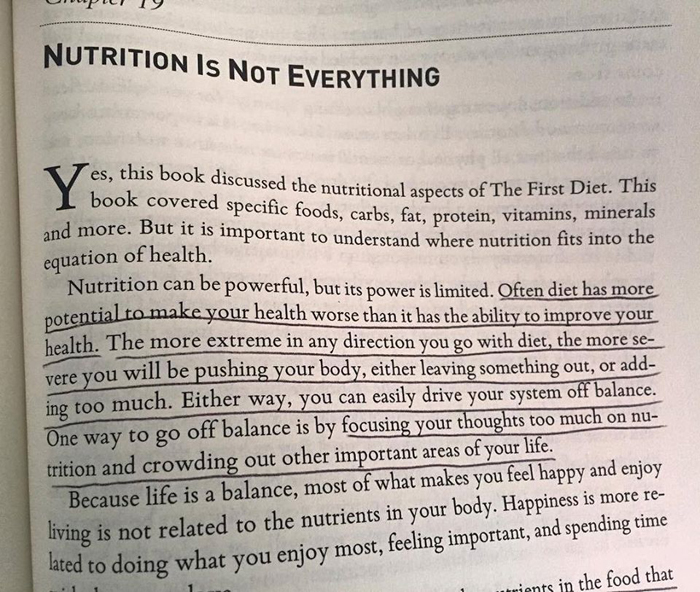In our last article, Before The Paleo Diet: The First Diet Book Review Part 1, we discussed the following:
- Why some nutritional ideas are wrong.
- Why some oils can be deteriorating to good health
- Why the Paleo Diet could’ve made our brains smaller
In part 2, we’ll be covering these ideas:
- Why sugar is essential (and necessary for optimal health).
- The oft-neglected amino acids (protein you’re probably missing out on).
- Why nutrition isn’t everything.
- Dietary limitations
Is Sugar Good For You?
If you’re one of those people who believes the headlines about sugar being toxic, or causing all kinds of disease, this chapter will literally snatch you up from those pits of hell and put you back on your feet.
While I can’t go into everything from the book, here are the cliffs I took from it:
Fructose is wrongly demonized. Mostly because it’s misunderstood from a practicality standpoint. When people say fructose will make you fat, they’re often referring to the studies where rats were given astronomical amounts (that aren’t found in human intake, even among those who drink the sweetest of sugary drinks). Alan Aragon does a good job of explaining the science to Dr. Lustig in these posts.
The thing is this. Every macronutrient can make you fat if you overeat enough. It’s easier to overeat sugary foods, especially when they’re paired with a fat source. Cupcakes, anyone?
Sugar is not as addictive as cocaine. Addiction is a complicated thing, but sugar in and of itself is not as addictive as the drug. Addition is multifaceted. There are physiological and psychological dependencies. There are even situational dependencies. Many addictions have a mix of these elements, which makes the concept incredibly complicated.
Can food become addictive? Sure, but it’s not the same as being addictive to something like cocaine — those are headlines written by sensationalist journalists trying to get your attention.
Fructose gets stored in your liver. And this is a great thing (because it can protect your lean body mass). The glycogen (sugar) stored in your liver is for reserve when/if your blood sugar gets low.
So if you’re not consuming much fructose and end up skipping a meal or two, you will feel the energy dips often associated with low blood sugar. And if your liver is low on sugar, your body will release stress hormones (like adrenaline and cortisol) to increase your blood sugar.
Fructose doesn’t spike your insulin. Many people will recommend to avoid fruit or fruit juices because of all the sugar and will claim it can wreak havoc on your blood sugar levels. However, since fructose is very low on the glycemic index (with an index of 19, five times lower than a potato), it hardly has an impact on insulin levels and can help keep blood sugar levels steady, especially eaten within a mixed meal (protein, carbs and fat).
Fructose doesn’t make you fat (gasp). This is taken straight from the book:
Many people will tell you that fructose can make you fat because fructose can damage your metabolism and impair your ability to use carbohydrates for energy. This is not true, and these claims are usually backed up by poorly designed studies. These studies should be largely ignored because of three primary reasons.
Reason 1: Rats do not handle fructose as well as humans do.
Reason 2: Researchers often grossly over feed rats on fructose, with a dose larger than most humans could possibly consume.
Reason 3: Isolated fructose is virtually never found in nature. Fructose is almost always accompanied by glucose, and that is exactly what sugar is, half glucose, half fructose. Studies done with pure fructose are unrealistic and do not apply to real world situations.
Lastly, fructose does not make people fat because the fact is that studies show fructose added to glucose increases total carbohydrate usage as compared to glucose alone. So when you eat glucose and fructose together—like you find in sugar—your ability to use carbohydrates for energy goes up, not down, and that means an increased metabolism.
Alright… this chapter sets you straight on most all of the sugar myths the media perpetuates. Sean does a good job looking at the bad science and explaining the role sugar plays in a healthy diet.
So as long as you’re getting enough carbohydrates (starch and sugar) to cover your needs for glycogen replenishment, and to fuel your brain, you’re good. Balance it out with enough fat and protein, and you’re on your way to high performance and good health.
The Often Neglected Amino Acids And Other Nutrients
In the west, we’re accustomed to lots of muscle meat. Sure, some like the odd organ dish every once in awhile. But when dining out, or at a friends place, you’re rarely served up a plate of liver, kidneys, or heart.
To take it further, it’s even more rare to consume the ‘throwaways’ of the animal — the feet, bones, tendons, intestines, etc.
But eating the whole animal, also know as eating head to tail, is as old as we are.
Lots of people my age and younger (millennials) will turn their nose up at the thought of eating liver, heart, tendon, or the feet of an animal. I won’t lie — when I first began investigating this I wasn’t exactly excited, but I was eager to learn.
I’m not a fan of beef liver, but I eat it weekly strictly for the Vitamin A content. I was introduced to beef heart by my best friend who has traveled to South America over 50 times. He’d often eat it in Peru as street food. So I got some heart from the local butcher and made the dish called Anticucho out on the grill.
To my surprise, it was amazing. It was even better during my travels to Peru, eating it streetside. I happen to love bone broth, and beef tendon (typically served in traditional Vietnamese Pho noodle soups), so that’s a plus when dining out.
And more recently, I’ve made it a pretty good habit to make bone broth just about every week if I can’t buy some in advance from the butcher. As of writing this, I have a pot boiling with a mixture of beef marrow bones, oxtail, and chicken feet.
So what’s the point?
Our ancestors ate nose to tail not because they loved every bite, but because they didn’t want to waste any food. It might be an unknown amount of time before their next meal, so nothing should go to waste.
And while they didn’t know it, those other parts of the animal was serving them metabolically with the extra vitamin and mineral content.
Glycine: the hard to get amino acid
If you’re only eating the beef steaks and chicken breasts, you’re missing out on glycine. And while you’re missing out on this amino acid, you’re also getting a lot of tryptophan and cysteine. Now there’s nothing inherently wrong with those amino acids, or any of them in particular, but nutrition is about balance. Anything in excess can be harmful.
It’s sort of like the macro view of the diet. If you’re stuffing yourself full of fat, and little to no carbs or protein, then you’re missing out on the benefits of the missing nutrients. Same if you were to eat a diet high in protein and nothing else. You’ll be missing out on the glycogen replenishment and some essential vitamins that require fat for transport.
Glycine is important for liver health, but in order to get plenty of it, you will have to eat the connective tissues of the animal (skin, tendons, etc). If you eat bone broth (gelatin), then you’re getting the glycine to balance out the other amino acids
Glycine also balances out excessive amounts of tryptophan and cysteine found in muscle meats. Why does this matter? Because in high amounts, it seems that tryptophan and cysteine can inhibit thyroid function[1]. So instead of loading up on only muscle meats, balancing it out with gelatinous cuts of meat (low in tryptophan, high in glycine) can be helpful in striking such a balance.
This why some people in alternative health circles will encourage you consume some gelatin along with muscle meats.
It’s even been noted that reducing tryptophan and cysteine intake could have life-extension properties greater than calorie-restriction alone[2]. (don’t shoot me — I’m just the messenger).
Nutrition Is Not Everything
One of my favorite aspects of this book is the fact is mentioned that nutrition is not always the answer. Sure, eating better is essential to good health, longevity, and being able to build your physique, but there are other factors.
I’ve tried a bunch of different dietary ideas. I’ve tried low-carb, Paleo (ish), the Zone style eating, intermittent fasting and even alternate day fasting.
I’ve gone on long tears of the IIFYM (if it fits your macros) stint where I’d aim to eat as much sugary cereal daily as possible, and I’ve completely abstained from it.
There’ve been times when a majority of my carb intake came from mostly fruit and fruit juice with very little starch.
Most of all, I’ve realized that eating well is only a part of the process. It’s just a piece of the puzzle, and while it’s very important, it’s not always going to make everything better.
Sean makes a great statement with huge impact:
“And if eating makes you happy, it’s not the nutrients in the food that make you feel that way, at least not in the moment. It’s the great tasting food that makes you feel happy when you eat. I’ve never heard someone say, “This hamburger tastes so great because it has 20 grams of fat, 30 grams of protein, and 40 grams of carbohydrates in it!” No, the burger tastes great because the burger tastes great, and someone put a lot of time and thought into making an incredible burger.”
Food is not only fuel for our bodies. It’s social. It’s cultural. It’s how we celebrate. It’s how we deal with sadness. In my most depressed moments (I may write on these eventually), food can offer a comfort that nothing else can.
When I think back to my childhood — some of my happiest moments were shared around some very low-quality food. I can recall all the late nights after football games where we’d buy 20 boxes of pizza and stuff ourselves silly, hanging out early into the morning reminiscing all the tackles we made, and passes we caught.
Some of my fondest memories were spent sharing a bowl of Velveeta / Ro-Tel cheese dip and stale tortilla chips with my family growing up.
If you’re into podcasts, Danny Roddy and Karen Mcc did a fantastic show about going beyond nutrition. There’s a lot more to health and happiness than just eating the perfect diet.
Many times, when something is going wrong in our lives, we try to control them. And if we can’t control them, we aim to control something… anything, but sadly for many, the only control they have is over their diet and training.
So in an attempt to make things right in their life, they turn to training and nutrition to fill a void, or fix something, but even then the best diet and exercise program falls short.
It’s why the best diet won’t always fix your health problems or why the best training program won’t make you into the beast you aspire to become.
Dietary Limitations
To end this, Sean covers something I think deserves a lot of attention. And that’s the topic of atrophy. Our bodies were designed / evolved to move. Everything we do has a consequence.
So while a healthy dietary protocol is key to good health, movement is also important. Stretching yourself and pushing yourself to move more, lift more, run further, reach new heights, is just as important, maybe even more important than the dietary aspect.
I’ve had the chance to learn under Amir Siddiqui’s guidance, and throughout that time chatting with him, one thing I learned deeply was that our movement is responsible for the adaptations, and food combines with the training to help those changes take place. But it’s our minds that make any of this possible in the first place.
—
References




1 thought on “Can Sugar Be Good For You? The First Diet Book Review Part 2”
Comments are closed.